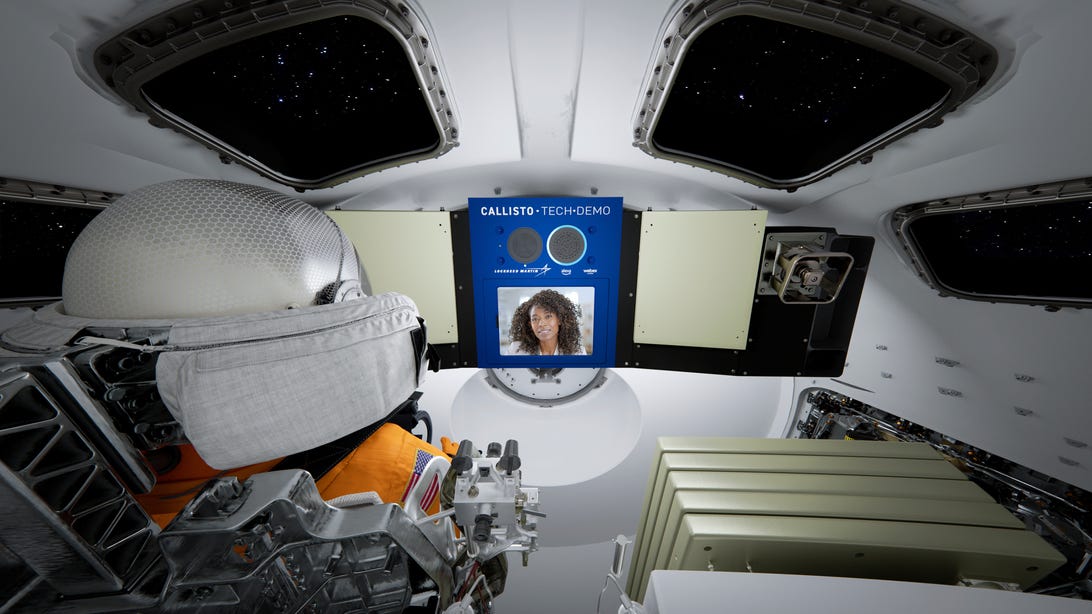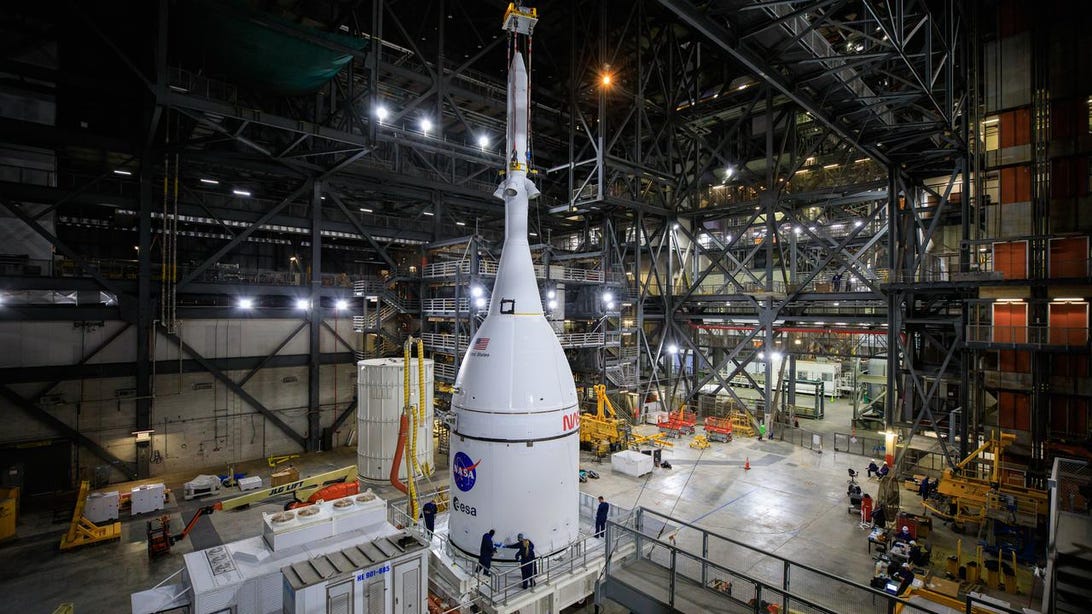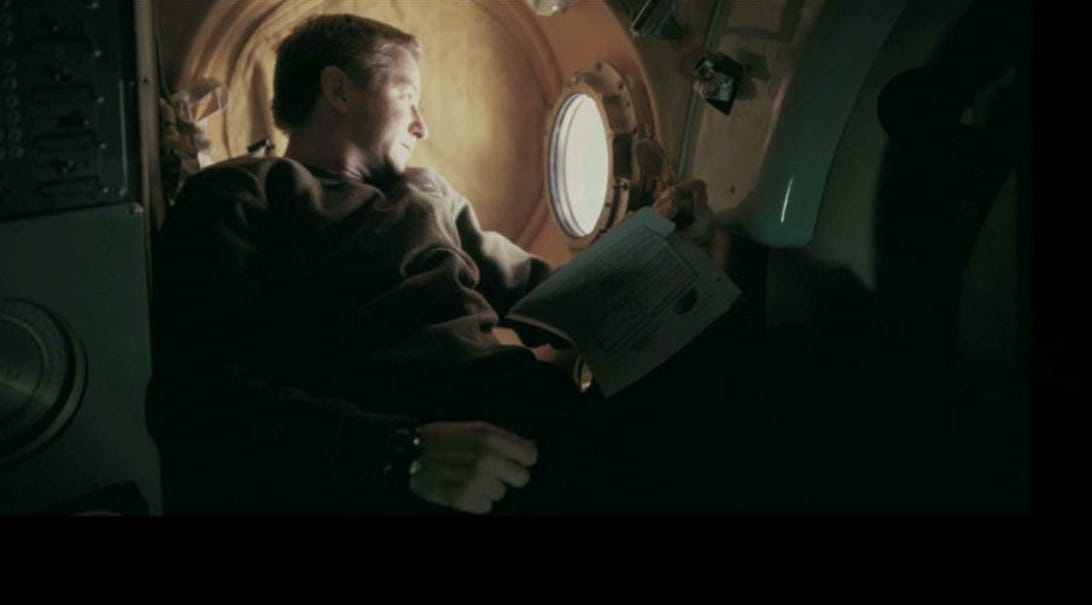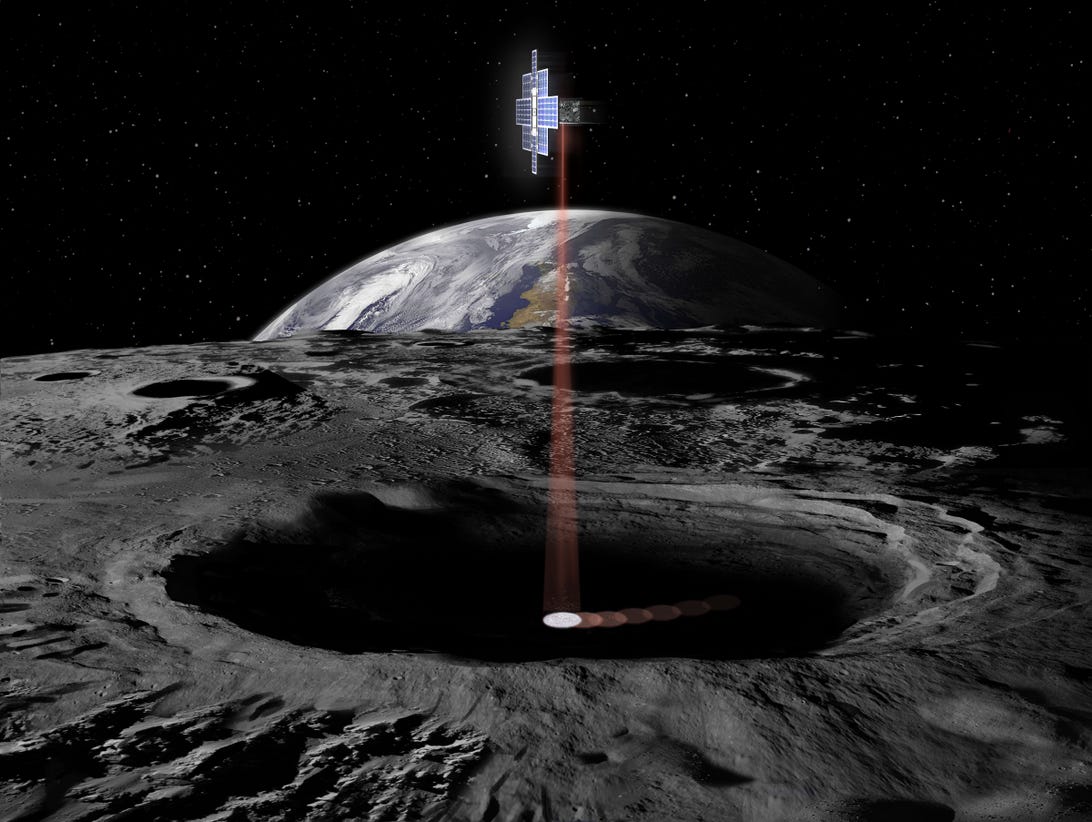[ad_1]

Alexa’s headed to the cosmos.
James Watkins/Amazon
This year, you may finally be able to say, « I know someone going to space. » Well, if you count AI companions, that is. NASA’s Orion spacecraft, scheduled to launch in early 2022 as part of the Artemis I lunar mission, will blast off with Alexa on board.
« The Star Trek computer was part of the original vision for Alexa, » said Aaron Rubenson, vice president of Amazon Alexa. « To build that form of ambient intelligence that’s helpful when you need it, then fades away. So it just is a perfect fit with some of the ways we’ve thought about potentially extending this technology. »
Our AI friend is going to be part of Orion’s payload called Callisto, which will demonstrate tech products poised to adorn spacecraft of the future. Callisto will also include Cisco’s videoconferencing software, Webex, which may one day offer astronauts face time with ground control, other crew members and loved ones back on Earth. Picture that iconic scene from the 2014 movie Interstellar when Cooper receives tons of unseen video messages from his daughter Murph, except in real time.
« The onboard version of Alexa, in some ways, will look very familiar, » Rubenson said. « It looks like an Echo Dot, it has the light ring that customers expect. Alexa works in the way that people are used to seeing it in their homes. »
Though Artemis I is crewless, Lockheed Martin, the company building the Orion spacecraft for NASA and working to implement Alexa and Webex on board, plans to test the devices with a virtual crew stationed at Johnson Space Center in Houston. The ground-based crew will send utterances up through NASA’s Deep Space Network, an international array of giant radio antennas used for communicating during interplanetary missions.
As Alexa won’t have standard internet connectivity in space, it’ll need the powerful network to enable Wi-Fi capabilities. The utterances will play out of a speaker to simulate an actual astronaut on board, then Alexa will respond accordingly.
It’s just like saying « Alexa, play classical music, » then promptly finding your ears blessed by Debussy. Except that astronauts would ask Alexa things like, « How fast is the ship traveling? » or « How far from the moon are we? »

The Orion spacecraft that’ll hold Alexa.
NASA
What can Alexa and Webex do in space?
« What Alexa has control over is the lights in the cockpit, which she can actually control without having to provide a command into the flight control system, » said Rob Chambers of Lockheed Martin.
And although the team has only implemented such light switch capabilities for this particular mission, Alexa could one day help with other activities, too.
« We’re thinking about situations when people are buckled into a chair, have gloves on or are otherwise engaged in some task but still want access to information or to be able to control some sort of device with their voice, » Rubenson said. Beyond the technical applications, Alexa may also mitigate astronauts’ feelings of isolation or psychological distress.

NASA astronaut Frank Culbertson looks out a window on the International Space Station.
Brigade Publicity
« Think about an astronaut that might want to know about yesterday’s news or might want to get the result of the sports game that they’ve been waiting for, » Rubenson said.
Inevitable loneliness that accompanies weeks-long missions to space could be softened by reminders to astronauts that Earth is always ready for them to come home.
‘Alexa, prepare to dock and play Starman’
Obviously, asking a personal at-home Alexa to convert ounces to cups while you’re baking cookies has much lower stakes than asking a space-based Alexa to calibrate rocket thrusters. Because of that, Chambers and Rubenson say they aim to prove Alexa can fly before adding critical duties to its task list.
Chambers dubs the first queries programmed for onboard Alexa as non-safety-critical, high-value efficiency commands. « Things like setting timers which are still useful in orbit or pulling up procedures to diagnose something, » Chambers said. « If they don’t work right, it results in a little bit of lost time. But they’re going to work right almost all the time. »
An example would be asking Alexa to capture an image but finding it doesn’t respond until a second or two later. Perhaps you’d lose some time on the shot, but the outcome wouldn’t be dire or endanger anyone on board. And more often than not, Alexa would probably work.
After preliminary tests are completed post-Artemis I launch, the spacecraft’s acoustics will inform scientists of any alterations that must be made. For instance, on a ship traversing the vacuum of space, our words may not hold up the same way they do in our living room.
Looking even further into the future, Chambers notes Webex’s whiteboard capability. « You can actually doodle like you would on a whiteboard in the conference room, » he said, and have it replicated on board. « What we find is that that’s really valuable, at least from an engineering perspective. »
Whiteboard features will be tested by using a bunch of cameras to see whether the things ground control writes appear onboard the craft. The time it takes for the onboard canvas to receive the doodle will also help mission control understand how to deal with communication lags.
« We really hope that when the world’s future engineers and astronauts and scientists see technology innovation like this happening in a place like space, » Rubenson said, « that it fires them up, inspires them to learn more … and sort of help us make future innovation possible. »
Rewind: What’s the Artemis I mission?
In a nutshell, NASA’s Artemis I mission is essentially a baby step toward grander things.
« Artemis I will provide a foundation for human deep-space exploration and demonstrate our commitment and capability to extend human existence to the moon and beyond, prior to the first flight with crew on Artemis II, » according to the mission overview. As of now, though, Alexa is only cleared for the unmanned Artemis I.
Artemis I’s Orion spacecraft is programmed to safely journey around the moon as proof of principle for Artemis II and later endeavors. The mission also includes the Space Launch System rocket, which will deploy 13 small satellites for investigative purposes that could one day aid in deep space research.

The lunar flashlight, one of NASA’s investigative systems that’ll be deployed on approaching the moon.
NASA
Fifty-two years ago, Neil Armstrong became the first man to stand on the moon, and with the upcoming Artemis missions, NASA intends to land the first woman and first person of color on the lunar surface.
In tandem with strides by the agency toward the next era of space exploration, tech giants Amazon, Cisco and Lockheed Martin are hoping to enhance communication and video to make spacecraft feel easier to manage and more like home.
Correction, 8:15 a.m. PT: This story initially misstated the technology that includes whiteboard capability. It’s Cisco’s Webex that has that feature.
[ad_2]
Source link

